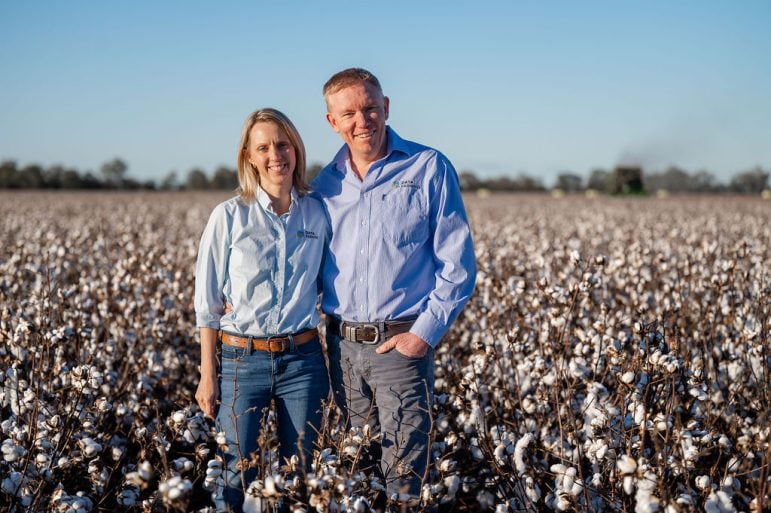DataFarming cofounder Tim Neale has been at the forefront of precision agriculture for more than two decades.
In that time, he’s seen the shift from being out in the field physically taking measurements and making observations to a digital revolution. But until now, the update in big data use for greater productivity has been slower than he’d hoped.
Now he believes a critical mass of users and investors are set to transform the sector and he believes DataFarming, which he cofounded with his wife Peta in 2017, can lead the way.
The precision agriculture company delivers digital solutions for farmers, primarily driven by satellite imagery, to unlock the value of farm data for agronomists and producers.
Already he services more than 120,000 paddocks across 28,000 farming enterprises in Australia, and overseas markets including the UK, South America, Africa and Europe.
“With 40% market penetration in Australia, we are seeking to build more products, and release our platform globally,” said Tim.
For Neale the next step in DataFarming’s evolution is a $5million Series A raise on the Agrifutures growAg platform to support the development of its product suite and scale globally.
“We’ve got a few products, including the cloud-based Digital Agronomist, which delivers satellite images to farmers every five days to help manage the variability they’re dealing with, whether it’s assessing crop yield in field or over time, or making decisions about fertiliser use,” he said.
“This helps identify what’s causing production variability factors – and we’ve built tools like variable rate application to fix those problems.
“Almost every producer has an agronomist, but the ability for the agronomists to service more fields can be challenging. Technology can certainly assist agronomists and farmers to do a more thorough and faster job of checking crops.”
Talking tech to farmers
Central to his thinking is the transition of DataFarming as a consultancy business to a light touch, mass market and low price point digital platform.
“We are placing valuable, easy-to-use farm data into the hands of every agronomist and producer,” he said.
“DataFarming has been an evolution of technologies of the last 20 years and has really been driven by the frustration around poor adoption of technology with farming. Before we came along, only 4% of farmers had actually looked at a satellite image of their property. Now we’re at the stage of getting close to 40% of the market using our platform.”
But he doesn’t blame farmers for that slow uptake – his view is the tech industry let them down.
“We’ve blamed the user, but it’s not the user who has failed. It’s actually the technology’s fault,” he said.
“Farmers have always been willing and able; they just haven’t had it presented to them in the right format before. And that’s largely because there’s just not been enough people and investment in farming technology to date.”
Getting the scale right is central to Neale’s vision.
“The way I look at it is if I was to build a mobile phone for 40,000 people, it would be a substandard mobile phone. But if I build a mobile phone for 40 million people, or 400 million people, it’s going to be a very good mobile phone,” he said.
“So, it’s the same thing. Because there’s only 40,000 customers for a particular precision agriculture product in Australia, there hasn’t been the amount of money, investment or demand to actually do that. So, everything’s sort of bootstrapped. And that’s led to poor adoption rates among other things.”
Agritech blooms
Now, Neale says, two things have changed
“Firstly, the whole world has become digitised. Secondly, the value that people are placing on data has increased. This is a big change that is driving the improvement of technology,” he said.
“Over the past 12 to 18 months, agriculture really has become the cool kid on the block.”
Tech is now also helping with his raise, with growAg filling what Neale sees as a major gap in the agtech market.
“Since listing our commercial opportunity on growAg. in December 2021, we’ve generated more than a dozen very strong leads from private investors and VCs from both here in Australia and overseas, and, for little or no effort,” he said.
“In comparison, I have about 20 other leads that I’m working on, which have taken me years to accumulate.”
Find out more on the DataFarming Series A investment round here,




















Trending
Daily startup news and insights, delivered to your inbox.